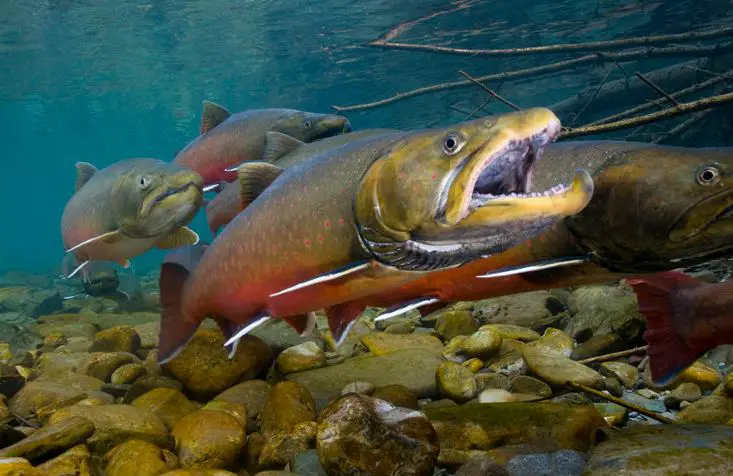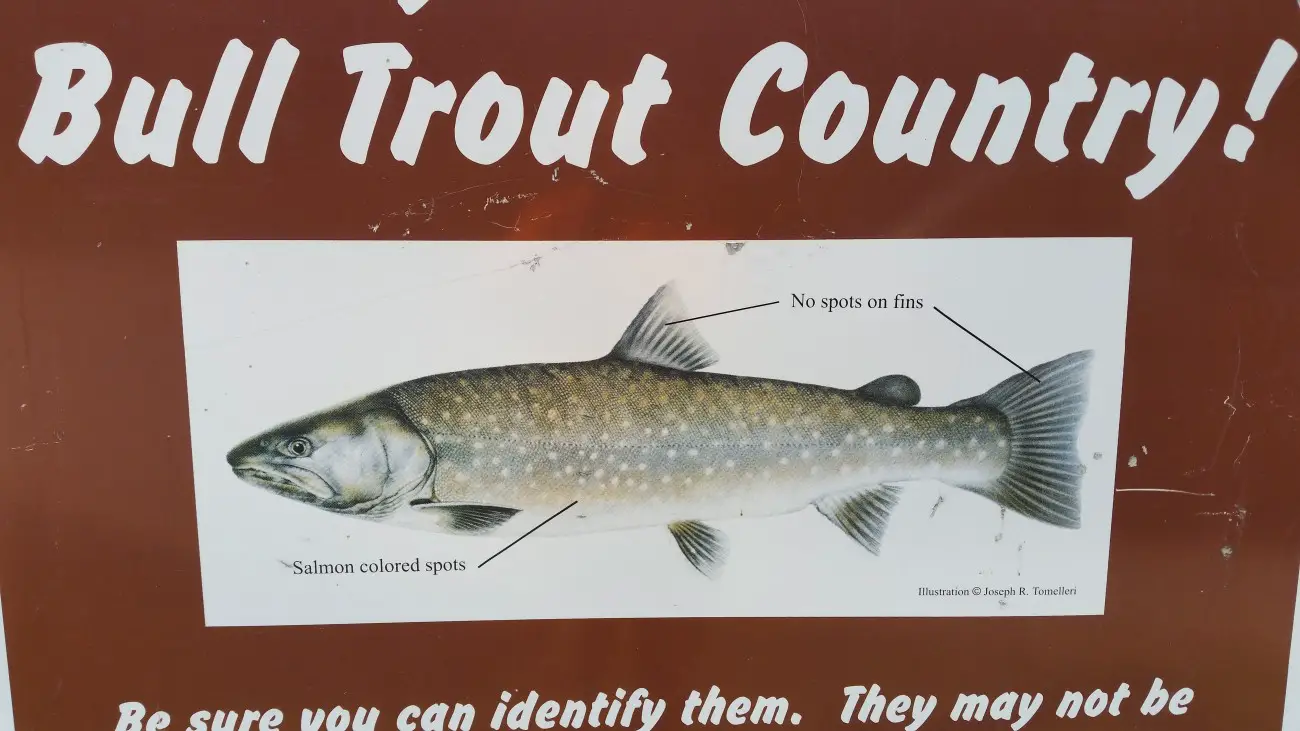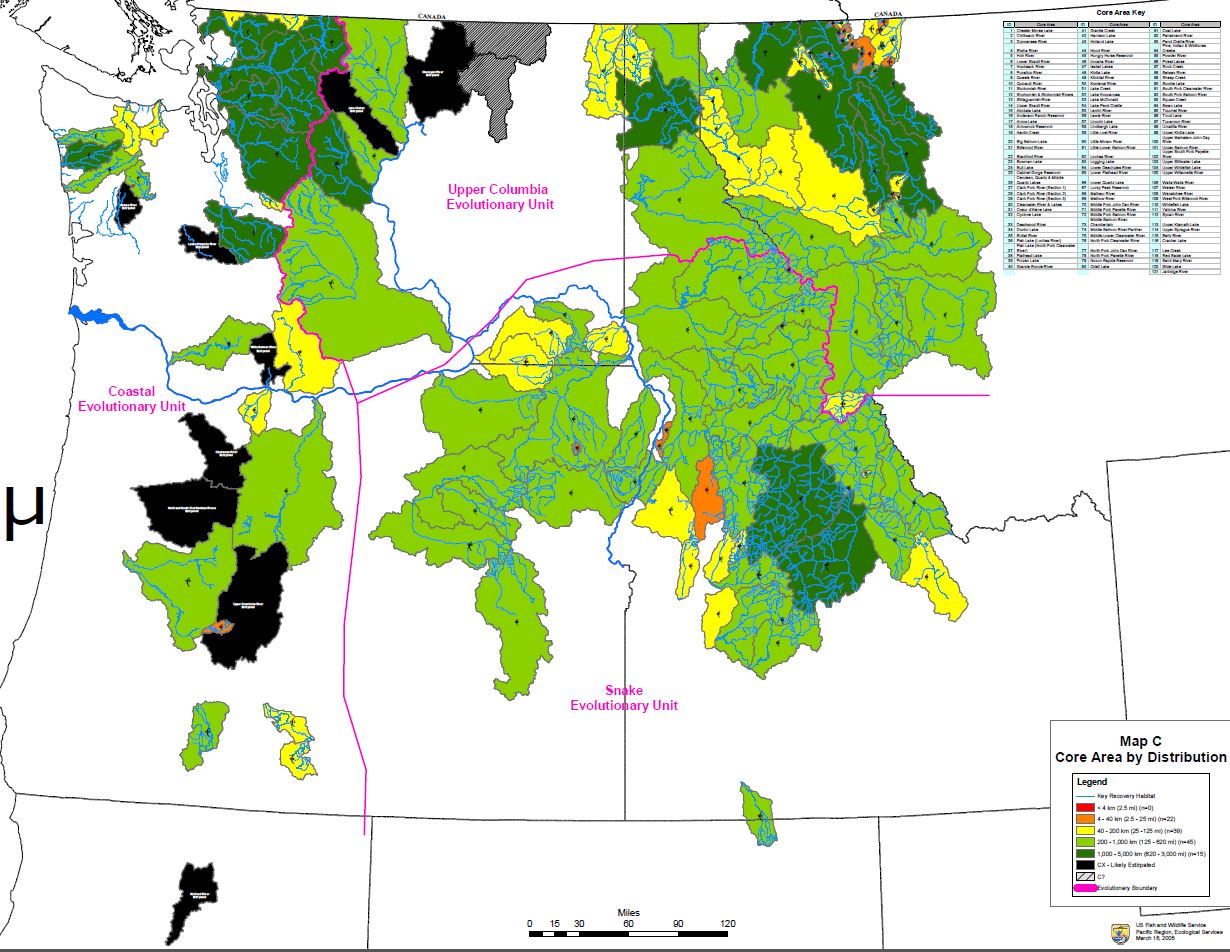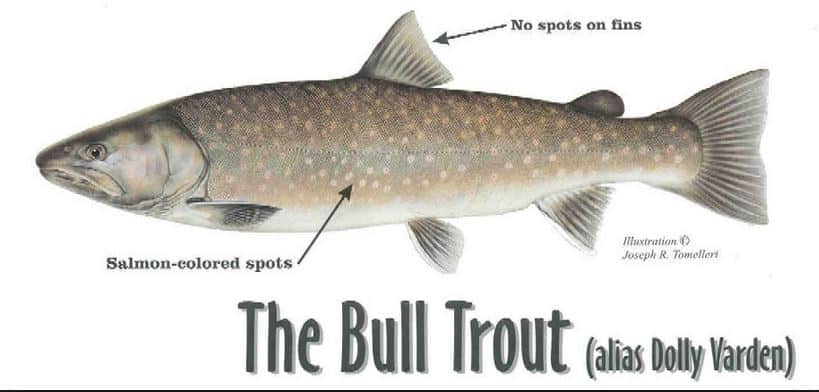This post was last updated on August 17th, 2021 at 09:31 pm
The bull trout (Salvelinus confluentus) is a native char found in western and southwest waters. At one time, it was not known that this species was separate from the fish known as Dolly Varden in the area. Now, however, it has become clear that these majestic fish are, indeed, another species. Here, we will explore the world of the bull trout, including how to correctly identify this species, where they are native to, their current endangered status, what others are doing to protect this species, and more.
What is a Bull Trout?

Bull Trout Identification
Bull trout can grow quite large when they reach maturity. Bull trout can be identified by looking for olive bodies with red and orange spots along each side, as well as pale yellow dots along the back. Look for white leading edges on fins, and for a translucent dorsal fin. Often, these fish have darker olive faces that remain the same whether they are spawning or not. During spawning seasons, the male may have an orange-red belly, but keep the darker olive coloration on their face, as well as along their backs. These fish have very fine scales, and no worm tracks.

Confusion with Other Species
Many do confuse the bull trout for the coastal Dolly Varden, even professionals. Bull trout have a more pronounced lower jaw that hooks up, and also a body that is not quite as rounded as Dolly Varden. The bull trout also has a larger more flattened head. If the fish you have caught has worm tracks, and red spots with blue halos, you have actually identified a different species of trout. Bull trout are classified as char, not an actual trout. However, the fact that they are often found in streams and lakes where other trout may be and are often easily confused.
Where do Bull Trout Live?

Bull trout habitat includes the Columbia River Basin, and the Klamath River Basin. They were also be found in waters in California, Idaho, Oregon, Nevada, Montana, and Washington you can still find these salmonoids in very cool, very clean streams that contain complex habitats, such as downed logs, undercut banks, and deep pools, where the waterway is connected to headwater streams. Bull trout are very picky about habitats because of their spawning habits. Many have said that these fish are completely extinct in California, though a few have still reported catching bull trout.
When do Bull Trout Spawn?
Bull trout can be either migratory, or may spend their whole lives in the same stream they were born. They require very clean water and streams with very little silt and debris. They may travel very long ways to lay their eggs from August to November. The eggs are then left after being deposited and fertilized until the coming spring, when they will hatch. These small fry will then survive largely on zoo plankton and aquatic insects. As they mature, the fish will begin to consumer smaller fish, instead. Over a lifetime, a they may spawn up to three times.
Bull Trout Size
Bull trout can grow up to 32 pounds in the wild, and may be as long as 103 cm. The overall growth depends upon whether they are migratory or residential. Bull trout that remain in one are their whole lives only reach about 4.5 pounds, maximum, while those that migrate can be much larger and longer.
What do Bull Trout Eat?
Small bull trout enjoy eating insects but often move to other fish as they grow in size. Large bull trout are primarily fish predators.
Are Bull Trout Endangered?
Bull trout are currently listed as a vulnerable endangered species. In some areas, fishing of this type of trout is no longer allowed, or a catch and release policy is enforced. The bulls face a real threat from habitat destruction, over harvesting, and more. The introduction of the brook trout into many native areas of this species has also had a major effect on populations due to hybridization. Some human structures, like dams, may stand in the way of this trout when it comes to breeding and spawning. Competition from other introduced species may also be a worry in some areas. Restoration of the once great population of bull trout in western states can only improve with habitat protection, improvement, and management.
Management Efforts
Many state and federal environmental and governmental organizations have been trying to help manage bull trout population. Measures are being taken to increase vegetation along streams and rivers, and to control agricultural run-off and logging in some of the watersheds where bull trout have been documented. Such organizations have increased efforts to preserve their habitat, and, in some areas, no longer allow fishing of this species, or ask anglers to release any bull trout they might accidentally catch. In other areas, limited fishing is considered fine. You may want to check with your local wildlife management agency about bull trout fishing in your own stream if you find a population of them are present. Even in some areas where these fish were once native, their population has greatly dwindled over the years.
Related Fish (char) Species You Might Be Interested in

